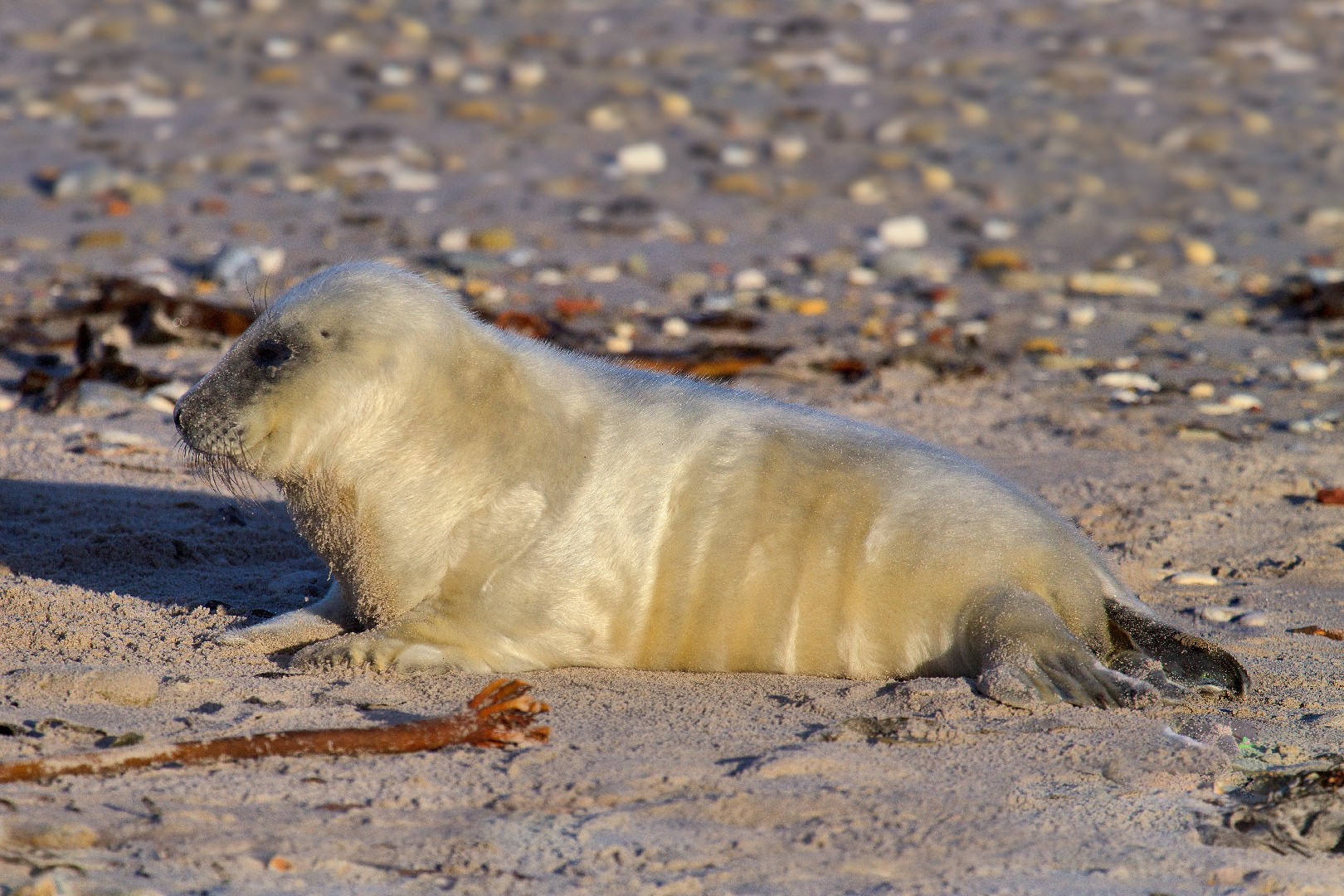Grey seal
A species of Grey seal, Also known as Earless seals, Horsehead seal, Atlantic gray seal Scientific name : Halichoerus grypus Genus : Grey seal
Grey seal, A species of Grey seal
Also known as:
Earless seals, Horsehead seal, Atlantic gray seal
Scientific name: Halichoerus grypus
Genus: Grey seal
Content
Description General Info
 Photo By Andreas Trepte , used under CC-BY-SA-2.5 /Cropped and compressed from original
Photo By Andreas Trepte , used under CC-BY-SA-2.5 /Cropped and compressed from original Description
It is a large seal, with bulls in the eastern Atlantic populations reaching 2.5–3.3 m (8.2–10.8 ft) long and weighing 170–310 kg (370–680 lb); the cows are much smaller, typically 1.6–2.0 m (5.2–6.6 ft) long and 100–190 kg (220–420 lb) in weight. Individuals from the western Atlantic are often much larger, with males reaching 400 kg (880 lb) and females weighing up to 250 kg (550 lb). It is distinguished from the harbour seal by its straight head profile, nostrils set well apart, and fewer spots on its body. Grey seals lack external ear flaps and characteristically have large snouts. Bull Greys have larger noses and a less curved profile than common seal bulls. Males are generally darker than females, with lighter patches and often scarring around the neck. Females are silver grey to brown with dark patches. 
General Info
Lifespan
25-35 years
Diet
Grey seal primarily forages on abundant marine crustaceans, specifically amphipods and isopods. Anchoring to rocks on seafloor, it consumes mollusks using sharp, robust teeth, occasionally supplementing diet with fish and squid.
Appearance
Grey seal are large, rotund marine mammals with a size range of 1.5 to 3 meters in length. They have a thick, rumpled skin coated with short, coarse fur that is grey-brown in color. Notable features include their conical, elongated heads with deep-set eyes and large, sensitive whiskers. Males, distinguishable by their larger size and broader noses, often bear battle scars from territorial fights. True to their aquatic nature, these animals are well-adapted to a life at sea with flippers designed for efficient swimming.
Behavior
Grey seal are semi-aquatic and spend most of their life in water, yet breed on land. Being very social, they form large colonies during breeding season. Males exhibit territorial behavior, defending breeding sites from rivals. The species spends much of its time foraging underwater for food. Adapted for survival, they can hold their breath for 15 minutes underwater.
Population
Increasing
Scientific Classification
Phylum
Chordates Class
Mammals Order
Carnivores Family
Earless seals Genus
Grey seal Species
Grey seal